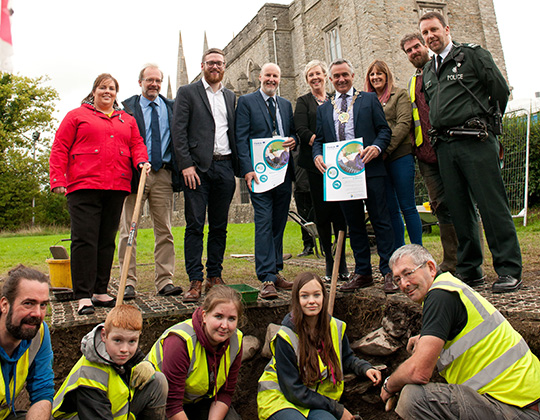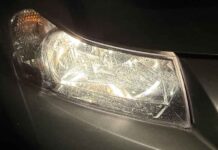New Discoveries at the Archaeological Dig on Cathedral Hill, Downpatrick
Newry Mourne and Down District Council has made significant findings at the cross-community excavation that has been taking place near Down Cathedral since 28 July 2018. This project is supported by the European Union’s PEACE IV Programme, managed by the Special EU Programmes Body (SEUPB).
The excavation has been conducted by professional archaeologists from the Centre for Archaeological Fieldwork and the Centre for Community Archaeology at Queen’s University Belfast, alongside a group of volunteers from across the community. The unexpected discoveries have become a massive tourist attraction for the area with hundreds of visitors everyday from as far as USA, Australia, and Japan. The Secretary of State for Northern Ireland, Karen Bradley MP even made time in her diary to stop by the dig.
Council Chairman, Councillor Mark Murnin said: “I am delighted that EU PEACE IV funding was approved to enable such a fantastic opportunity to delve into our shared history relating to St Patrick and his legacy. This project has created huge interest amongst local people and visitors. The local and regional press have been keeping people updated on the latest findings, and we are amazed and delighted at the vast number of people stopping by on a daily basis.

Back Row (l-R) Claire Loughran – NMDDC Peace IV Officer ; Michael King, Heritage Manager, Down County Museum; Councillor Gareth Sharvin; Councillor Harry Harvey; Ellen Brennan, Rowallane DEA Co-ordinator; Council Chairman, Councillor Mark Murnin; Katrina Hynds- Downpatrick DEA Co-ordinator; Brian Sloan, Centre for Archaeological Fieldwork at Queen’s University, Sergeant Sam Ballard; PSNI Community Planning, with community volunteers in the front row helping with the excavation
“The discoveries from this excavation have inspired the interest and imagination of many and I commend Queen’s University Belfast for the professional manner in which they have led this excavation.”
Excavation director, Brian Sloan said: “This has been a tremendous experience for the excavation team and the volunteers who have taken part in the investigation. We have discovered remains of the medieval abbey of Down, but we have also retrieved a huge number of artefacts, ranging from pottery to metalwork, stone moulds to pins, and from ceramic tiles to animal bones and oyster shells. All of this material will revolutionise our understanding of life in Downpatrick from the time of St Patrick onwards. In addition, we have found a Mesolithic flint tool that dates back to about 8000 BC, which represents the earliest evidence for people living here in Downpatrick 10,000 years ago.”
Queen’s University Centre for Archaeological Fieldwork will deliver a post-excavation lecture at Down County Museum on Thursday 15 November 2018, this will be a further opportunity to learn about the discoveries from the excavation after they have been analysed. All artefacts discovered during the excavation will be transferred to Down County Museum later this year.
Match-funding for this project has been provided by the Northern Ireland Executive Office and the Department for Rural and Community Development in Ireland.

























